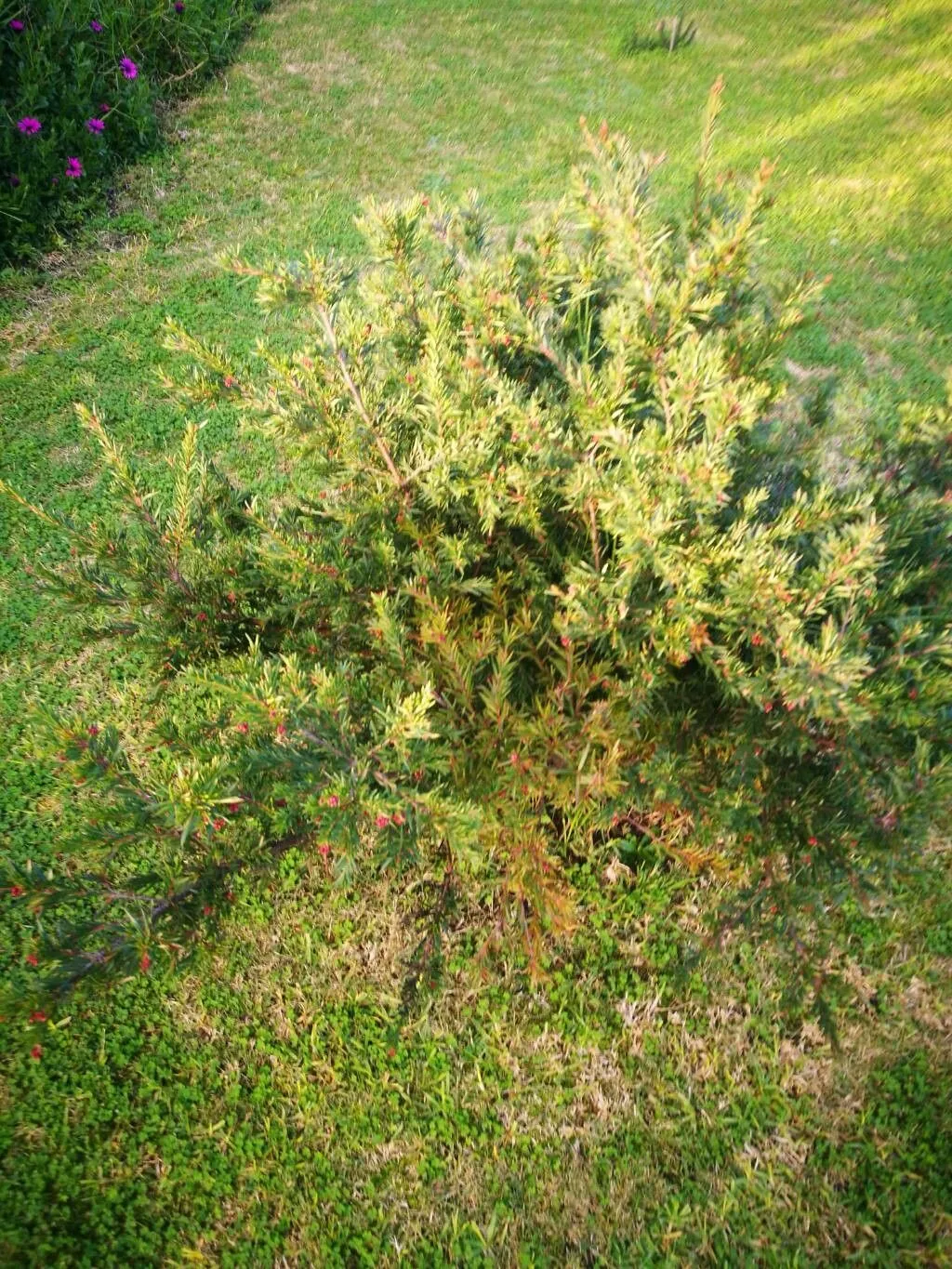
Author: A.Cunn.
Bibliography: B.Field, Geogr. Mem. New South Wales: 328 (1825)
Year: 1825
Status: accepted
Rank: species
Genus: Grevillea
Vegetable: False
Observations: SE. New South Wales to Victoria
Rosemary grevillea, scientifically named Grevillea rosmarinifolia, is a captivating evergreen shrub belonging to the Proteaceae family. First described in 1825 by A.Cunn. in B.Field’s “Geographical Memoirs of New South Wales,” this distinctive plant has continued to enchant botanists and gardeners alike.
Indigenous to the southeastern regions of New South Wales extending into Victoria, Grevillea rosmarinifolia thrives in a variety of landscapes. This plant is highly admired for its ornamental value, characterized by its dense, needle-like foliage reminiscent of rosemary, which not only contributes to its charm but also imparts its common name.
The shrub is celebrated for its vibrant and intricate flowers that appear predominantly in shades of red, pink, and sometimes white. These striking blossoms typically flourish during the cooler months, offering an alluring display of color against the lush green backdrop of the foliage. The flowers are not only visually appealing but are also a beacon for local wildlife, attracting nectar-feeding birds and insects which play a crucial role in pollination.
Adaptability is one of the key strengths of Grevillea rosmarinifolia. It can prosper in various soil types, provided there is good drainage, and is known for its drought tolerance once established. This resilience, coupled with its low maintenance needs, makes it a popular choice for garden enthusiasts looking to add a hardy yet beautiful plant to their landscape.
Cultural significance and horticultural use aside, Rosemary grevillea also serves ecological purposes in its native habitat. It helps in stabilizing soil and preventing erosion, making it an excellent choice for environmental conservation efforts.
In conclusion, Grevillea rosmarinifolia, or Rosemary grevillea, is a remarkable plant that offers aesthetic beauty, ecological benefits, and versatility in cultivation. Its rich history and enduring appeal underscore its significance in both natural and landscaped settings.
Eng: rosemary grevillea
Swe: rosmaringrevillea
En: Rosemary grevillea
Sv: Rosmaringrevillea
© copyright of the Board of Trustees of the Royal Botanic Gardens, Kew.
Taken Jun 6, 2018 by Pep Secem (cc-by-sa)
Taken Jun 6, 2018 by Pep Secem (cc-by-sa)
Taken Jun 6, 2018 by Pep Secem (cc-by-sa)
Taken May 22, 2018 by Pep Secem (cc-by-sa)
Taken Jun 30, 2018 by Pep Secem (cc-by-sa)
Taken Apr 8, 2020 by Armand buard (cc-by-sa)
Taken May 1, 2020 by david le nay (cc-by-sa)
Taken Feb 10, 2022 by Denis Alkan (cc-by-sa)
Taken May 2, 2019 by Pierre Bonnet (cc-by-sa)
Taken Jul 5, 2022 by Dave Ketteringham (cc-by-sa)
Taken Mar 29, 2021 by Bernardino Vitor (cc-by-sa)
Taken Apr 13, 2019 by tony leroy (cc-by-sa)
Taken Sep 20, 2019 by Celis Diego (cc-by-sa)
Taken Feb 3, 2020 by Quentin Mastin (cc-by-sa)
Taken May 22, 2018 by Pep Secem (cc-by-sa)
Taken Jul 29, 2021 by Giode Tonpino (cc-by-sa)
Taken Mar 31, 2019 by voxit (cc-by-sa)
Taken Sep 9, 2020 by Rico Mende (cc-by-sa)
Taken Aug 17, 2019 by Fedan Hacizade (cc-by-sa)
Taken May 4, 2022 by mmeD (cc-by-sa)
Taken Nov 2, 2022 by jack barrau (cc-by-sa)
Taken Apr 5, 2021 by javipez (cc-by-sa)
Taken Jan 1, 2020 by carlotta (cc-by-sa)
Taken Nov 17, 2022 by Xavier FOURRIER (cc-by-sa)
Taken Mar 8, 2020 by Martina (cc-by-sa)
Taken Aug 24, 2021 by Simon Chirgwin (cc-by-sa)
Taken Mar 29, 2021 by Rémi Potier (cc-by-sa)
Taken Jul 22, 2022 by Natural Ethik (cc-by-sa)
Taken Sep 9, 2020 by Rico Mende (cc-by-sa)
Taken Nov 17, 2022 by Xavier FOURRIER (cc-by-sa)
Family: Myrtaceae Author: (F.Muell.) K.D.Hill & L.A.S.Johnson Bibliography: Telopea 6: 402 (1995) Year: 1995 Status:…
Family: Rubiaceae Author: Pierre ex A.Froehner Bibliography: Notizbl. Bot. Gart. Berlin-Dahlem 1: 237 (1897) Year:…
Family: Sapindaceae Author: Koidz. Bibliography: J. Coll. Sci. Imp. Univ. Tokyo 32(1): 38 (1911) Year:…
Family: Asteraceae Author: A.Gray Bibliography: Pacif. Railr. Rep.: 107 (1857) Year: 1857 Status: accepted Rank:…
Family: Fabaceae Author: Medik. Bibliography: Vorles. Churpfälz. Phys.-Ökon. Ges. 2: 398 (1787) Year: 1787 Status:…
Family: Aspleniaceae Author: (Cav.) Alston Bibliography: Bull. Misc. Inform. Kew 1932: 309 (1932) Year: 1932…